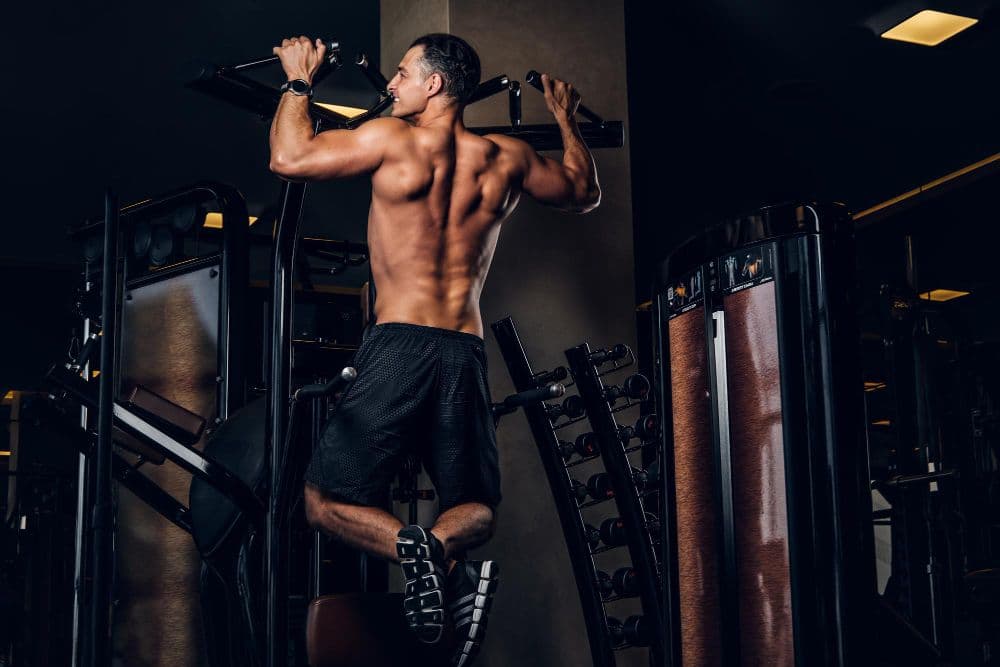Introduction
Split training is one of the most popular ways to build muscle and strength, especially among intermediate and advanced lifters. Unlike full-body routines, which train the entire body in one session, a split routine breaks your training into different muscle groups or movement patterns across the week.
This allows for more total volume per muscle group, greater recovery time between sessions, and the opportunity to specialize in weak points. In this article, we will explore the science of split training, the different types of splits, how to choose the right one for your goals, and sample programs for each.
Why Choose a Split Routine?
Split training gives you the ability to focus on fewer muscle groups per session, which means:
- Higher Volume per Muscle Group: More sets, more exercises, more hypertrophy potential.
- Better Recovery: Muscles get more time to recover before being trained again.
- Specialization: Ideal if you want to bring up lagging body parts.
- Variety: Reduces boredom since each session has a different focus.
Types of Split Training
There is no one-size-fits-all split. Below are the most common and effective variations.
1. Upper/Lower Split
- Structure: One day trains all upper body muscles, the next day trains all lower body muscles.
- Frequency: Typically 4 days per week (Mon/Tue/Thu/Fri).
- Best For: Strength and hypertrophy balance.
Sample Upper Day:
- Bench Press – 4x6
- Pull-Ups – 4x8
- Overhead Press – 3x8
- Barbell Row – 4x8
- Dumbbell Lateral Raise – 3x12
- Face Pull – 3x15
Sample Lower Day:
- Squat – 4x6
- Romanian Deadlift – 3x10
- Walking Lunges – 3x12 per leg
- Leg Curl – 3x12
- Calf Raise – 4x15
- Hanging Leg Raise – 3x12
2. Push/Pull/Legs Split
This is arguably the most popular split for intermediate lifters.
- Push: Chest, shoulders, triceps
- Pull: Back, biceps
- Legs: Quads, hamstrings, glutes, calves
- Frequency: 3 days (ideal for beginners) or 6 days (advanced lifters).
Sample Push Day:
- Bench Press – 4x6
- Overhead Press – 3x8
- Dumbbell Fly – 3x12
- Skull Crushers – 3x10
- Triceps Pushdown – 3x12
Sample Pull Day:
- Deadlift – 3x5
- Barbell Row – 4x8
- Lat Pulldown – 3x10
- Barbell Curl – 3x12
- Hammer Curl – 3x12
Sample Leg Day:
- Squat – 4x6
- Romanian Deadlift – 3x10
- Bulgarian Split Squat – 3x12
- Hip Thrust – 3x12
- Calf Raise – 4x15
3. Body-Part Split ("Bro Split")
This is the classic bodybuilding approach — one muscle group per day.
- Monday: Chest
- Tuesday: Back
- Wednesday: Shoulders
- Thursday: Arms
- Friday: Legs
This split works well for experienced bodybuilders who need very high training volume per muscle group, but it may not be optimal for beginners due to low frequency (only once per week per muscle).
4. PHUL or PHAT Split
- PHUL (Power Hypertrophy Upper Lower): Combines strength-focused days with hypertrophy days.
- PHAT (Power Hypertrophy Adaptive Training): Popularized by Dr. Layne Norton, includes both heavy powerlifting-style training and bodybuilding-style accessory work.
These are excellent for lifters who want strength and size simultaneously.
Benefits of Split Training
Allows Higher Weekly Volume
You can perform 15-20 sets for a muscle group in a single session, which can lead to superior hypertrophy.
Improved Recovery
Each muscle group typically gets 48-72 hours of rest before being trained again, which is ideal for muscle repair and growth.
Psychological Focus
Easier to mentally focus on fewer muscle groups per session rather than a full-body routine.
Drawbacks of Split Training
- Time Requirement: Most splits require at least 4-6 training sessions per week.
- Risk of Missed Sessions: If you miss a day, you may neglect an entire muscle group.
- Overlapping Fatigue: Training chest and shoulders on consecutive days can cause performance issues if not programmed correctly.
Choosing the Right Split
When choosing a split, consider:
- Your Schedule: If you can only train 3 days per week, a push/pull/legs rotation is ideal.
- Your Goals: Strength athletes may prefer upper/lower or PHUL, while bodybuilders benefit from bro splits.
- Your Recovery Ability: Listen to your body. If you feel fatigued or sore all the time, reduce frequency or volume.
Programming Tips
Progressive Overload: Always aim to lift more weight, do more reps, or add more sets over time.
Deload Weeks: Every 6-8 weeks, reduce volume or intensity to allow full recovery.
Track Your Workouts: Keep a log to monitor progress.
Example 5-Day Split Program
Day 1 – Chest & Triceps
- Bench Press – 4x6
- Incline Dumbbell Press – 4x8
- Cable Fly – 3x12
- Dips – 3x12
- Triceps Pushdown – 3x12
Day 2 – Back & Biceps
- Deadlift – 3x5
- Pull-Ups – 4x8
- Barbell Row – 4x8
- Dumbbell Curl – 3x12
- Face Pull – 3x15
Day 3 – Rest or Active Recovery
Day 4 – Shoulders & Abs
- Overhead Press – 4x8
- Lateral Raise – 3x15
- Front Raise – 3x12
- Rear Delt Fly – 3x15
- Hanging Leg Raise – 3x12
Day 5 – Legs
- Squat – 4x6
- Romanian Deadlift – 3x10
- Walking Lunges – 3x12
- Leg Curl – 3x12
- Calf Raise – 4x15
Conclusion
Split training is an excellent way to build muscle, especially when you want to increase training volume and focus on specific muscle groups. Whether you choose an upper/lower split, push/pull/legs, or a classic bodybuilding split, the key is consistency, progressive overload, and proper recovery.
With a well-structured split program, good nutrition, and patience, you can achieve impressive results and build a physique that is strong, balanced, and aesthetic.
